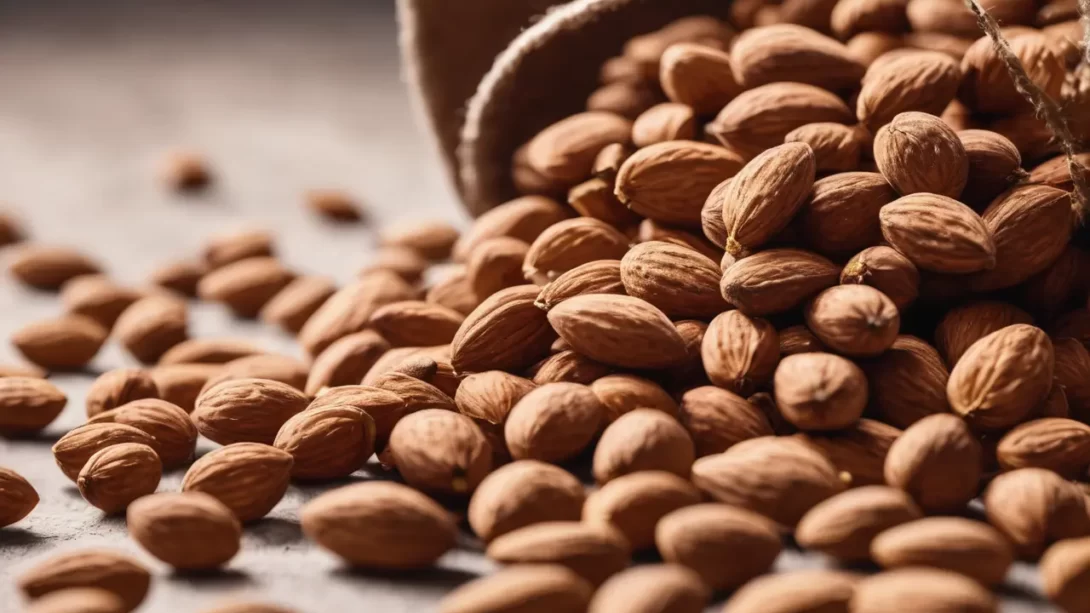Sprouting almonds is a simple process that can enhance their nutritional value and make them easier to digest. When almonds are sprouted, the process breaks down some of the enzyme inhibitors, making nutrients more accessible. This article will guide you through the steps to successfully sprout almonds at home, unlocking their full health potential.
Selecting Almonds for Sprouting
The first step in sprouting almonds is to choose the right kind of almonds. It’s essential to use raw, organic almonds that haven’t been heat-treated or pasteurized, as these processes can destroy the enzymes needed for sprouting. Some almonds, especially those imported into certain countries, are required by law to be pasteurized, which can prevent them from sprouting. Look for almonds labeled as “raw” and “organic” to increase the chances of successful sprouting.
Preparing Almonds for Sprouting
Before you begin the sprouting process, it’s important to prepare the almonds properly. Start by sorting through the almonds and removing any that are damaged or discolored. Once sorted, place the almonds in a large bowl. The preparation step is crucial as it sets the stage for successful sprouting by ensuring only healthy, viable almonds are used.
Soaking the Almonds
Soaking is the first active step in the sprouting process. Place your almonds in a bowl and cover them with ample water, as they will expand during soaking. The ideal ratio is about 2-3 times the volume of water to almonds. Use room temperature water for soaking. The almonds should be soaked for 12-24 hours, which helps to initiate the sprouting process by softening the almonds and activating their enzymes. A longer soaking time may be needed if the almonds are particularly dry or hard.
Draining and Rinsing Process
After the almonds have soaked for the recommended time, the next step is to drain and rinse them. Drain the soaking water and rinse the almonds thoroughly under cool, running water. This step is crucial as it removes phytic acid and enzyme inhibitors released during soaking. It also refreshes the almonds with clean water, which is essential for the sprouting process.
For effective sprouting, the almonds should be rinsed and drained 2-3 times a day. Consistent rinsing prevents any mold formation and keeps the almonds in optimal condition for sprouting. Ensure that after each rinse, the almonds are well-drained. Excess water can hinder sprouting and potentially lead to spoilage.
Creating the Right Environment for Sprouting
Creating an ideal environment is critical for the almonds to sprout. After rinsing, place the almonds in a sprouting jar or container. This container should allow air circulation while keeping the almonds moist. You can use a jar with a sprouting lid or cheesecloth secured with a rubber band.
Position the container in a spot with indirect light at room temperature. Too much direct sunlight can dry out the almonds, while a lack of light may hinder their growth. The location should also be away from any direct heat sources. The ideal temperature for sprouting almonds is between 65-75°F (18-24°C).
Monitoring the Sprouting Process
As the almonds begin to sprout, you will notice small white tails emerging from the nuts. This usually happens within 2-5 days after starting the rinsing and draining process. The length and visibility of the sprouts can vary. Some almonds may have very tiny sprouts, while others may have more pronounced tails. Regularly check and rinse the almonds to ensure they remain moist and are sprouting correctly.
Storing and Using Sprouted Almonds
Once your almonds have sprouted, it’s important to store them properly to preserve their freshness and nutritional value. Sprouted almonds can be stored in the refrigerator to slow down any further growth and maintain their crispness. Place them in a clean, airtight container, and they can last for up to a week. If you notice any signs of spoilage, such as a sour smell or mold, discard the almonds immediately.
Sprouted almonds offer a range of culinary uses. They can be eaten raw, which is a great way to enjoy their crunchy texture and enhanced flavor. Alternatively, they can be added to salads, blended into smoothies, or used as a topping for yogurt or oatmeal. For a different taste and texture, you can also lightly roast sprouted almonds in the oven.
Conclusion
Sprouting almonds at home is a simple and rewarding process that enhances their nutritional profile and adds a delightful crunch to your diet. By following these steps – selecting the right almonds, soaking, rinsing, and providing the right environment for sprouting – you can easily sprout almonds in your own kitchen. Remember to store your sprouted almonds properly and enjoy them in a variety of dishes. Incorporating sprouted almonds into your diet is a delicious way to boost your intake of healthy nutrients and enjoy a wholesome snack.



